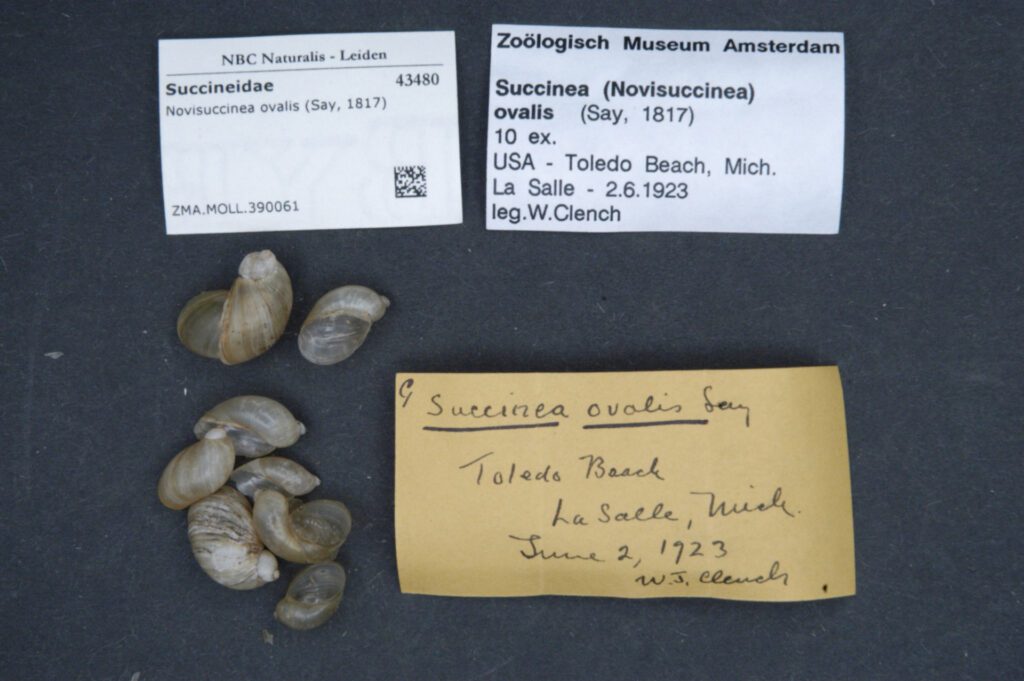
Image Usage Information

Image Usage Information
Family: Succineidae
Common name: Blunt Ambersnail
Discovery: I. Lea, 1834
Identification
Length: 6-14 mm
Whorls: 3
This ambersnail is intermediate in size. It has shallower sutures and flatter whorls, giving it a more streamlined look than Catinella vermeta. It also has a taller aperture, about 2/3 the total shell length. The basal margin of its aperture may appear nearly flat, although this may vary to more rounded. The animal is stippled with small black spots, which form bands on top of the head, including a stripe to each antennae.
Ecology
Oxyloma retusum is often found in damp fields or shoreline habitats, sometimes at high densities in the warmer months. It may be seen crawling in muddy areas or on wetland plants (Hubricht 1985). Along a small lake in Maryland, this species was eating mostly dead plants in the spring, but both live and dead plants in summer and fall (Örstan, 2006).
In Maryland a few individuals of this species survive the winter, then grow until the end of June when the larger animals die off following an initial mating period (Örstan, 2006). Offspring from the first mating period engage in their own mating in late summer. Survivors of the spring and late summer generations enter winter hibernation.
Courtship is initiated by one snail crawling onto the shell of another and crawling around the shell apex toward its partner’s head (Örstan, 2006). At this point the animal initiating mating twists its head to bring the right-side genital openings together, or repeats the crawling cycle. Mating takes from one to one and a half hours, and is usually reciprocal (both animals donating sperm).
Taxonomy
Synonyms for Oxyloma retusum include: Oxyloma retusa, Succinea calumetensis, S. higginsi, Succinea retusa decampi, S. retusa, and S. r. magister.
Distribution
Oxyloma retusum ranges from interior New York and New England west through the great Lakes to the Dakotas. Virginia has only scattered reports including Highland County (Hubricht, 1985; lacking a museum specimen record so not appearing on the range map) and New Kent County – reports that are uncertain due to its similarities with close relatives.
Conservation
NatureServe Global Rank: G5
NatureServe State Rank: SNR
